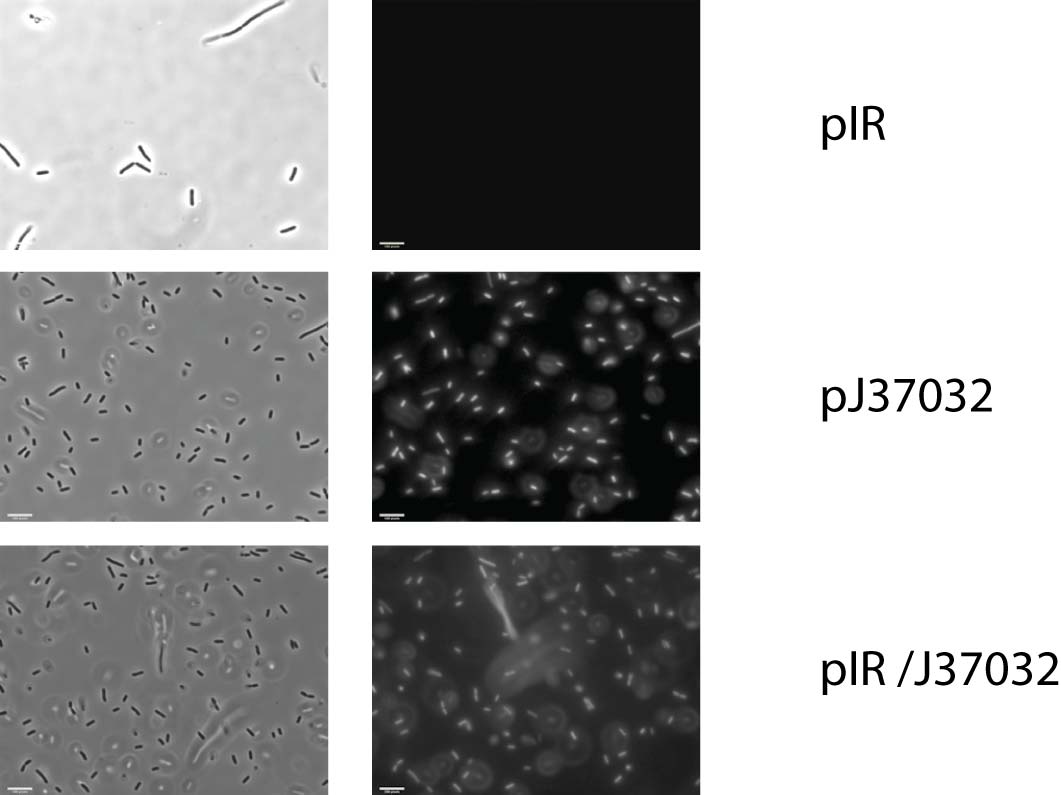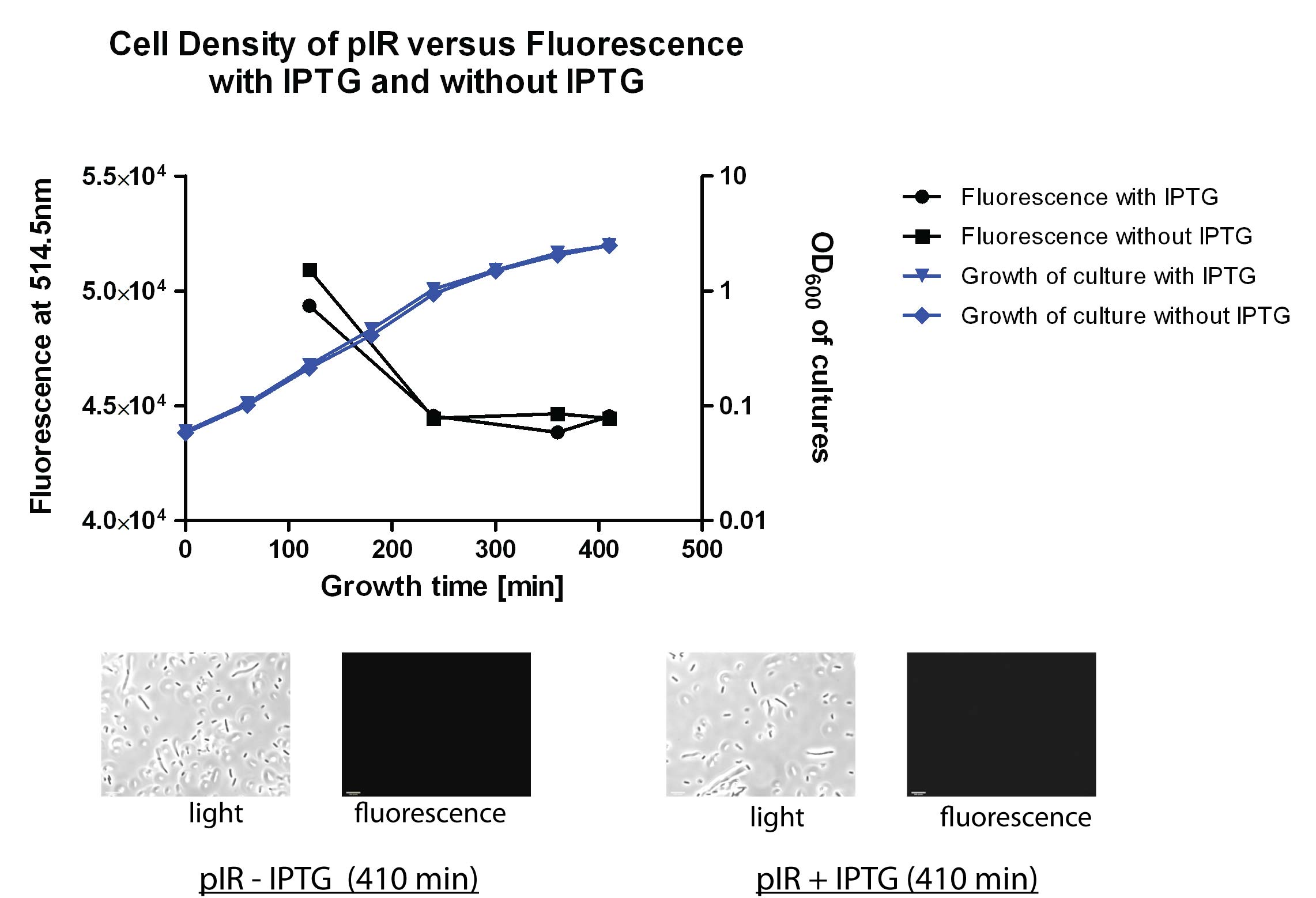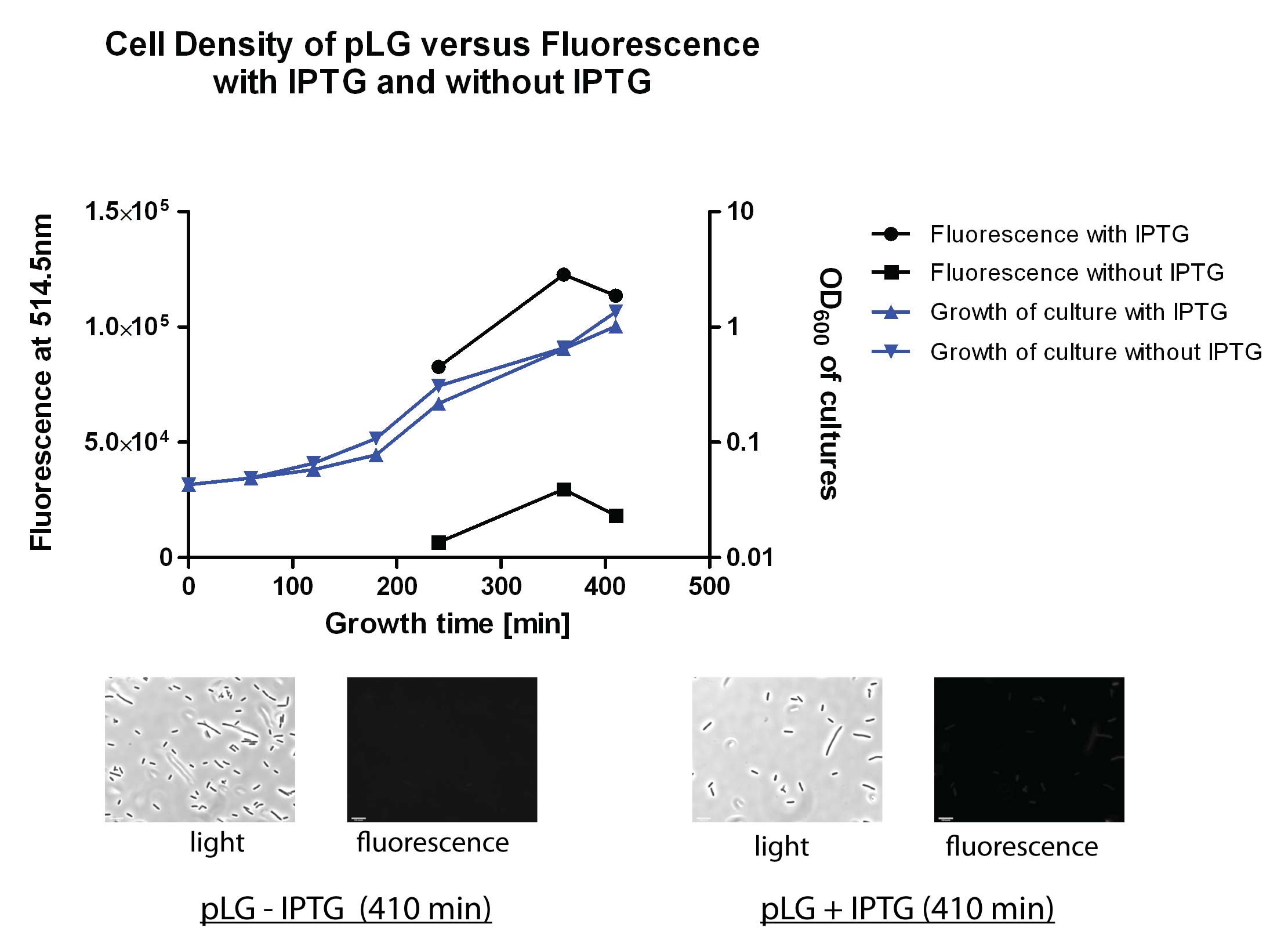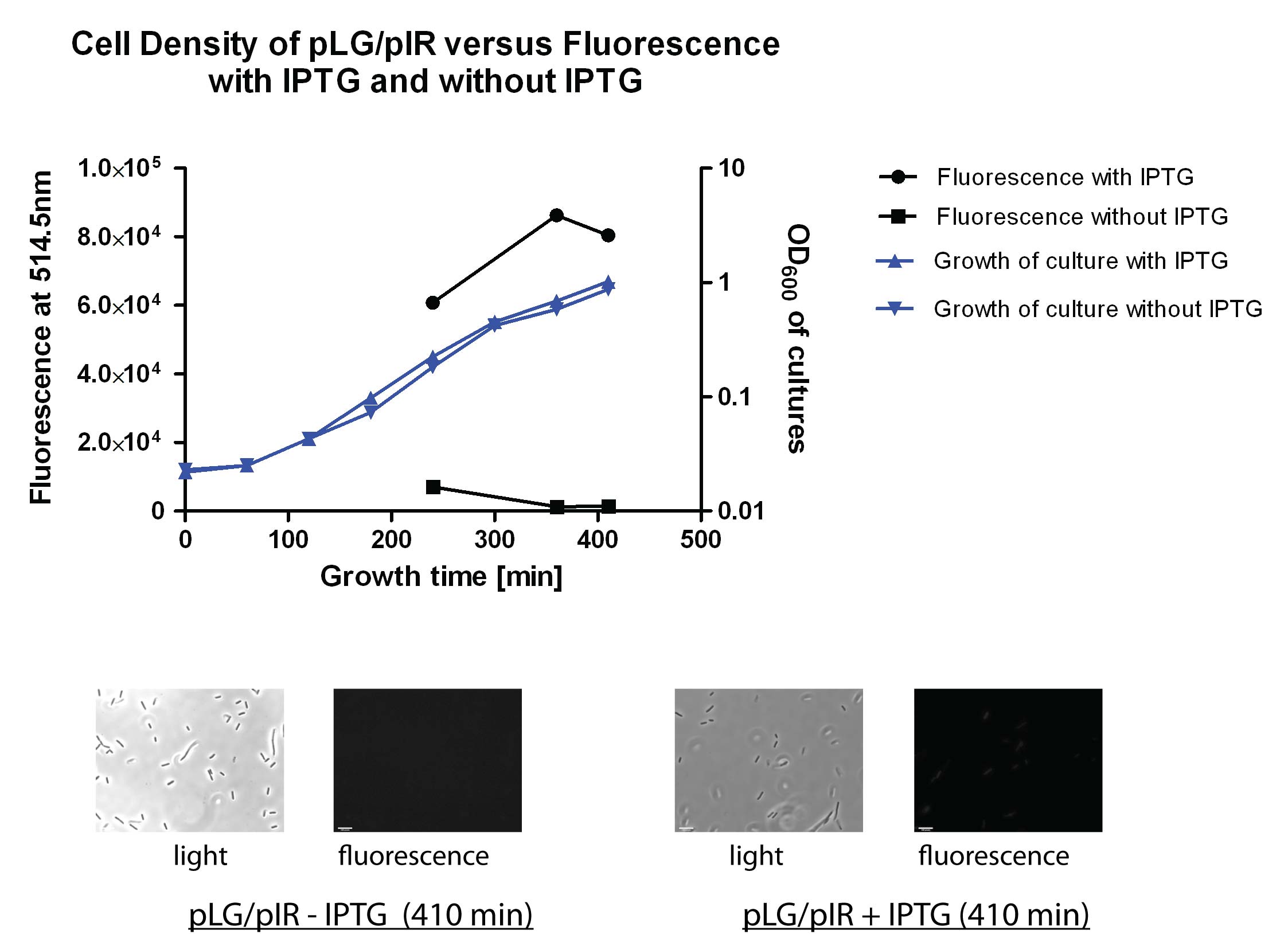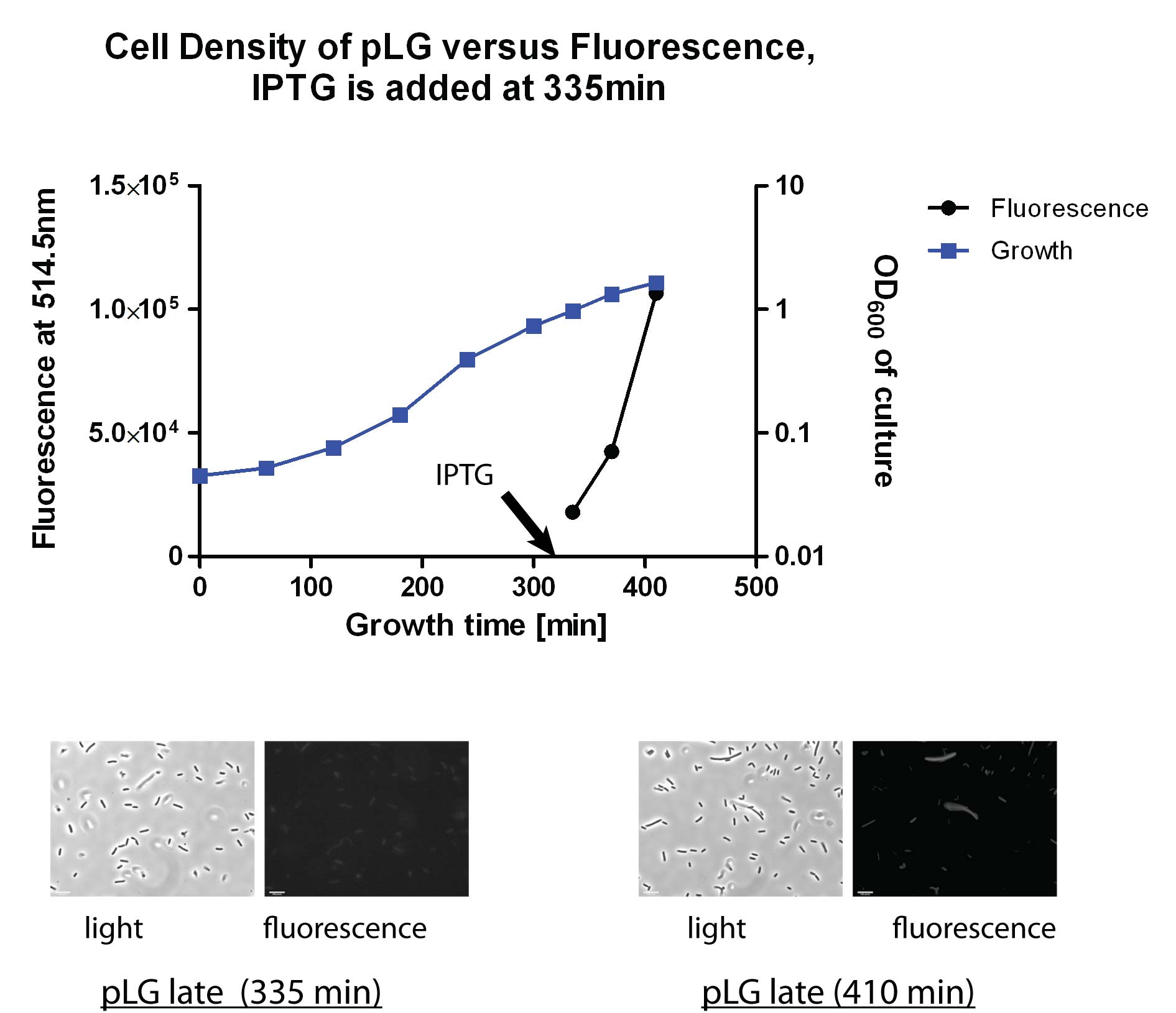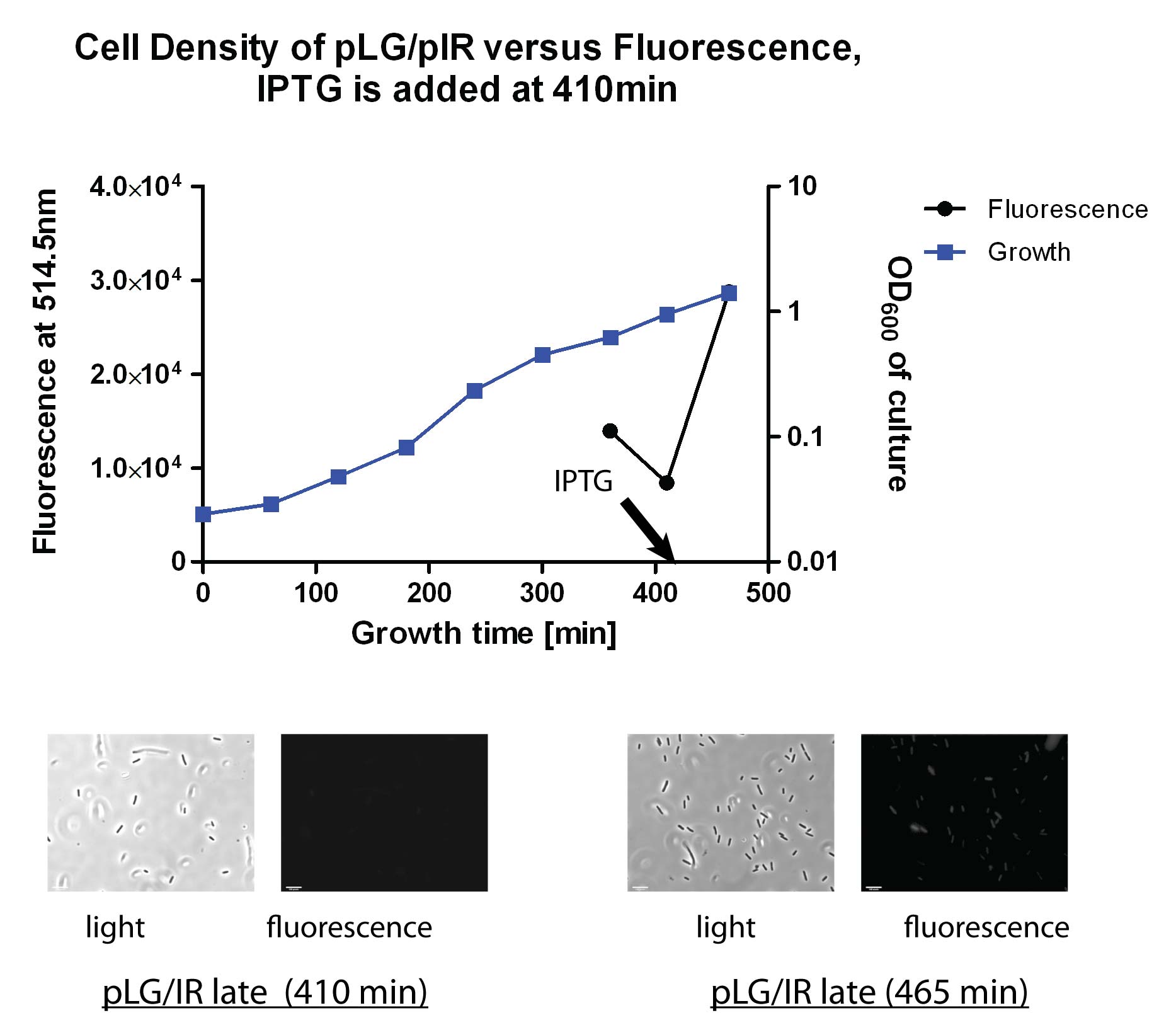Team:Aberdeen Scotland/WetLab/quorumsensing/results
From 2009.igem.org
University of Aberdeen - Pico Plumber
Results and Discussion
Aims and background for testing our Quorum Sensing construct
In our first experimental set-up, we wanted to test whether our Quorum Sensing construct (further referred to as pIR) works on its own, and induces a pLux promotor to enhance trancription. The testing construct , which was used, consists of a pLux promoter and the gene for the green fluorescence protein. Therefore, it is expected that without Quorum Sensing construct no fluorescence occur.
For this purpose SCS1 E.coli cells were transformed with 1) pIR alone, 2) alone, and 3) pIR and J37032 together. The first one is the negative control. Without any GFP gene inside the cells they should not fluorescence. The second set of cells should show no fluorescence as the promoter needs to be activated by Quorum Sensing or only to a small degree due to leakiness of the promoter. The third set should show low fluorescence at low cell density and high fluorescence at high cell density.
Pictures were taking from over night cultures, i.e. at high cell density, under a light microscope (left hand-side) and a fluorescence microscope (right hand-side) from the 3 different SCS1 E.coli cell transformances. No fluorescence were shown on the pIR only transformance. However, the J37032 transformance shows as high a fluorescent as the double transformance.
Those results suggest that is not responsive to Quorum Sensing as it does not need LuxI/LuxR to produce GFP. Or as an alternative the pLux promoter is extremely leaky.
MORE TEXT
Initial -ve control
MORE TEXT
MORE TEXT
MORE TEXT
MORE TEXT
 Back to Cloning Strategy Back to Cloning Strategy
|
Continue to Beta Galactosidase Assay 
|
 "
"
